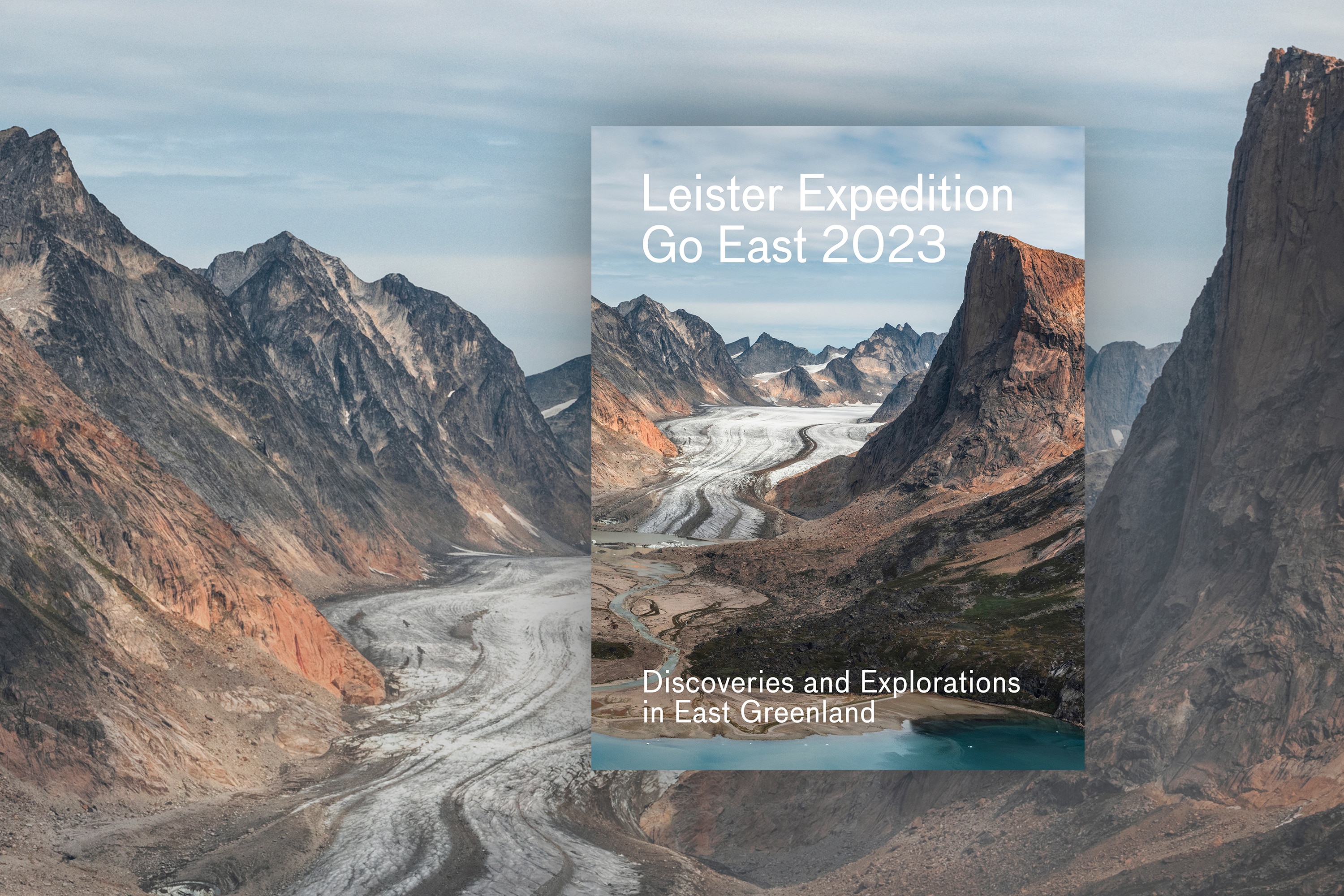East Greenland Expedition 2023
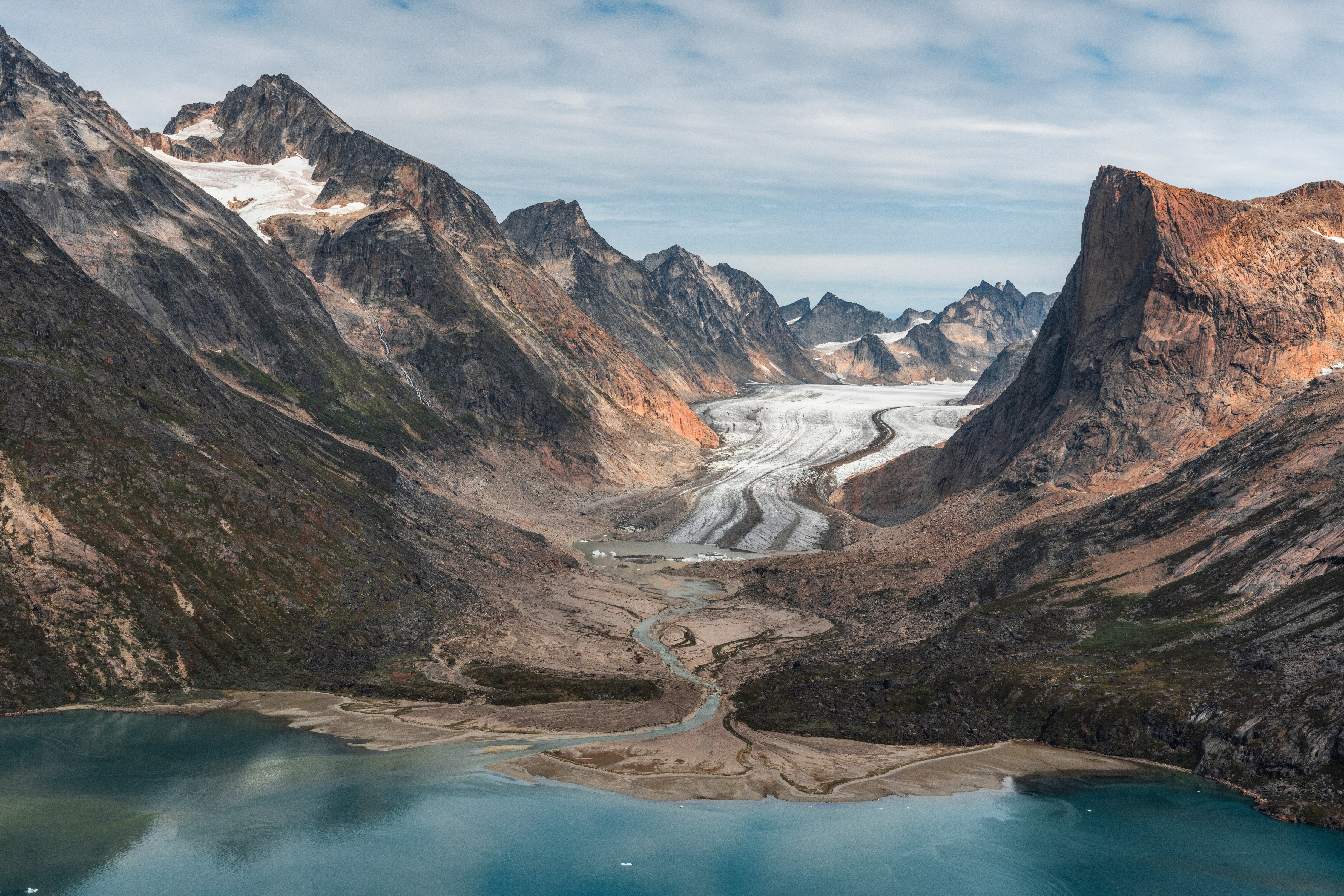
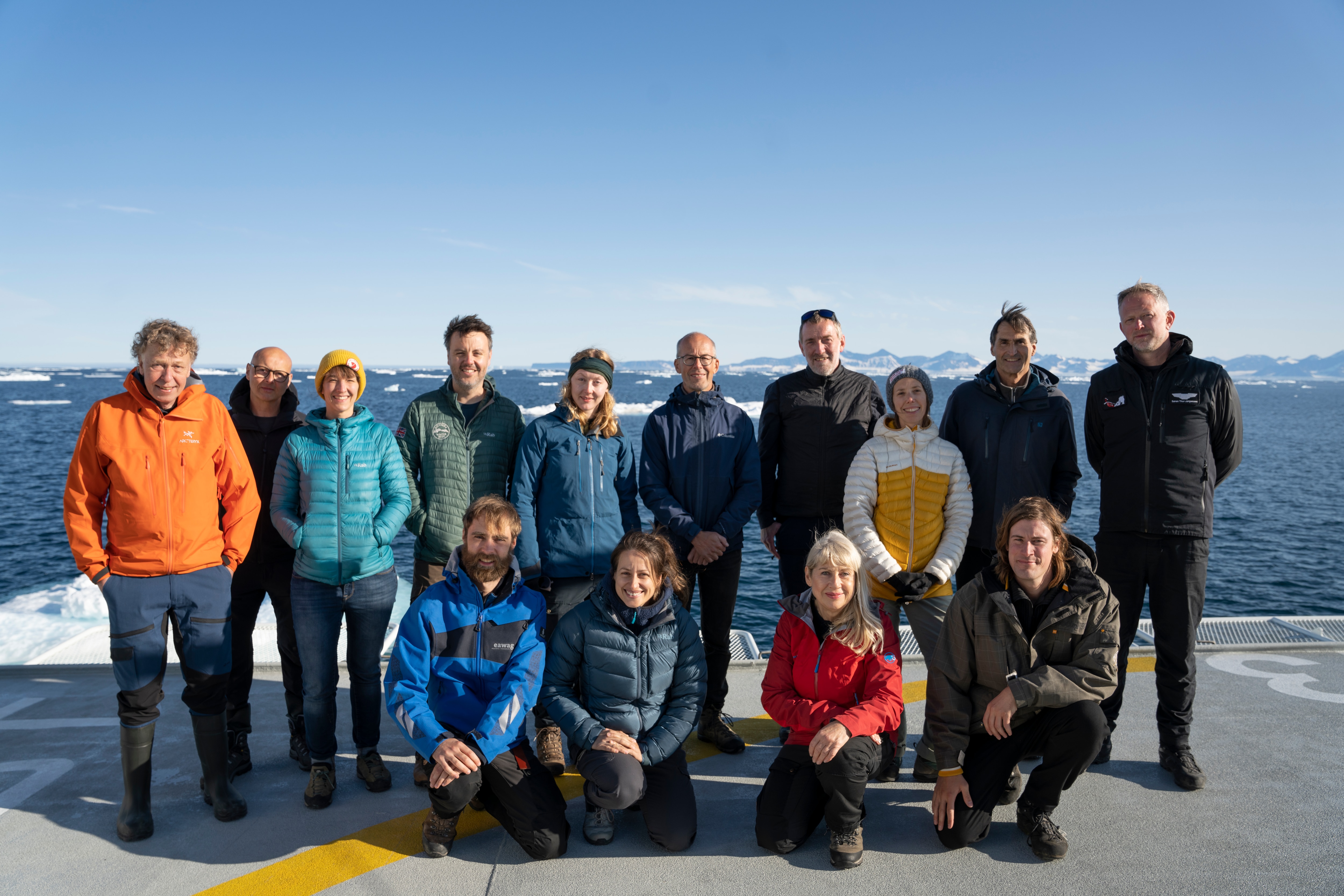
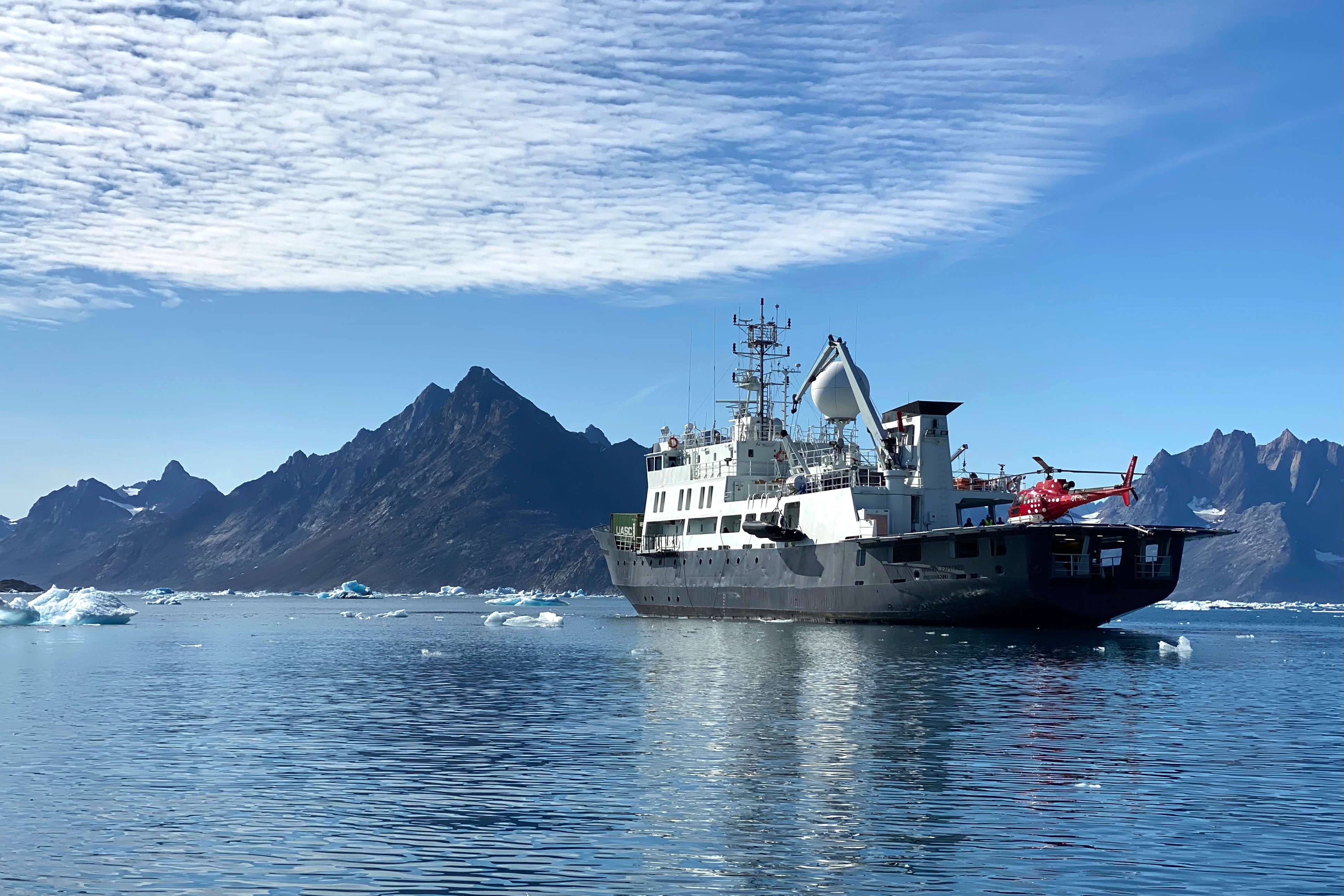
The Norwegian icebreaker Nansen Explorer—equipped with a helicopter deck, an Air Greenland AS350 helicopter, two Zodiacs, a laboratory container, and a winch—served as the expedition platform. This setup made possible both flexible access to shore and marine sampling, providing a decisive advantage for fieldwork in difficult-to-access terrain.
(photo: Christiane Leister)
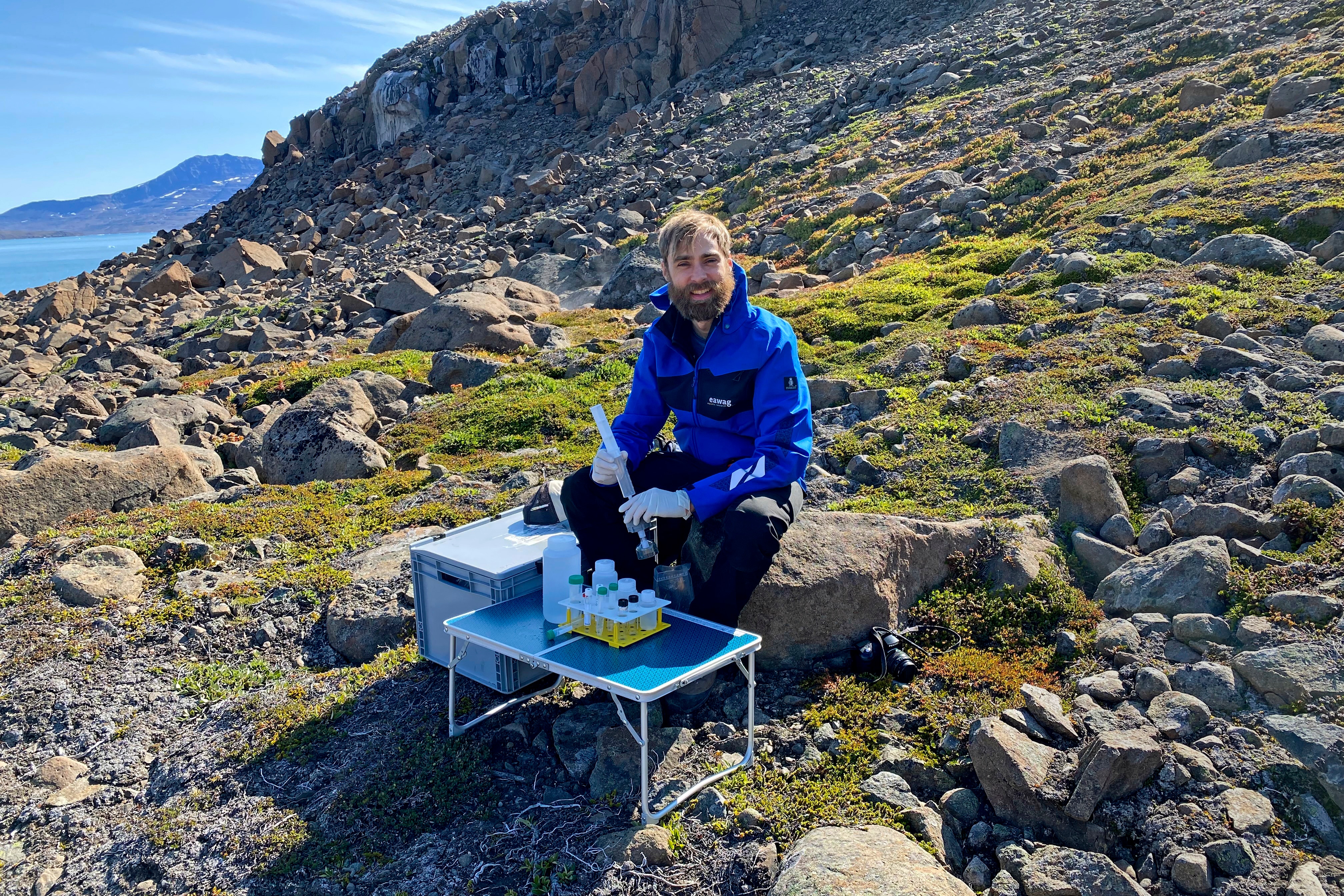
David Janssen (Eawag, Switzerland) with water samples. The portable filtering setup was designed to maximize efficiency and flexibility, easily allowing sample filtering in the field or on board the ship.
(photo: Christiane Leister)
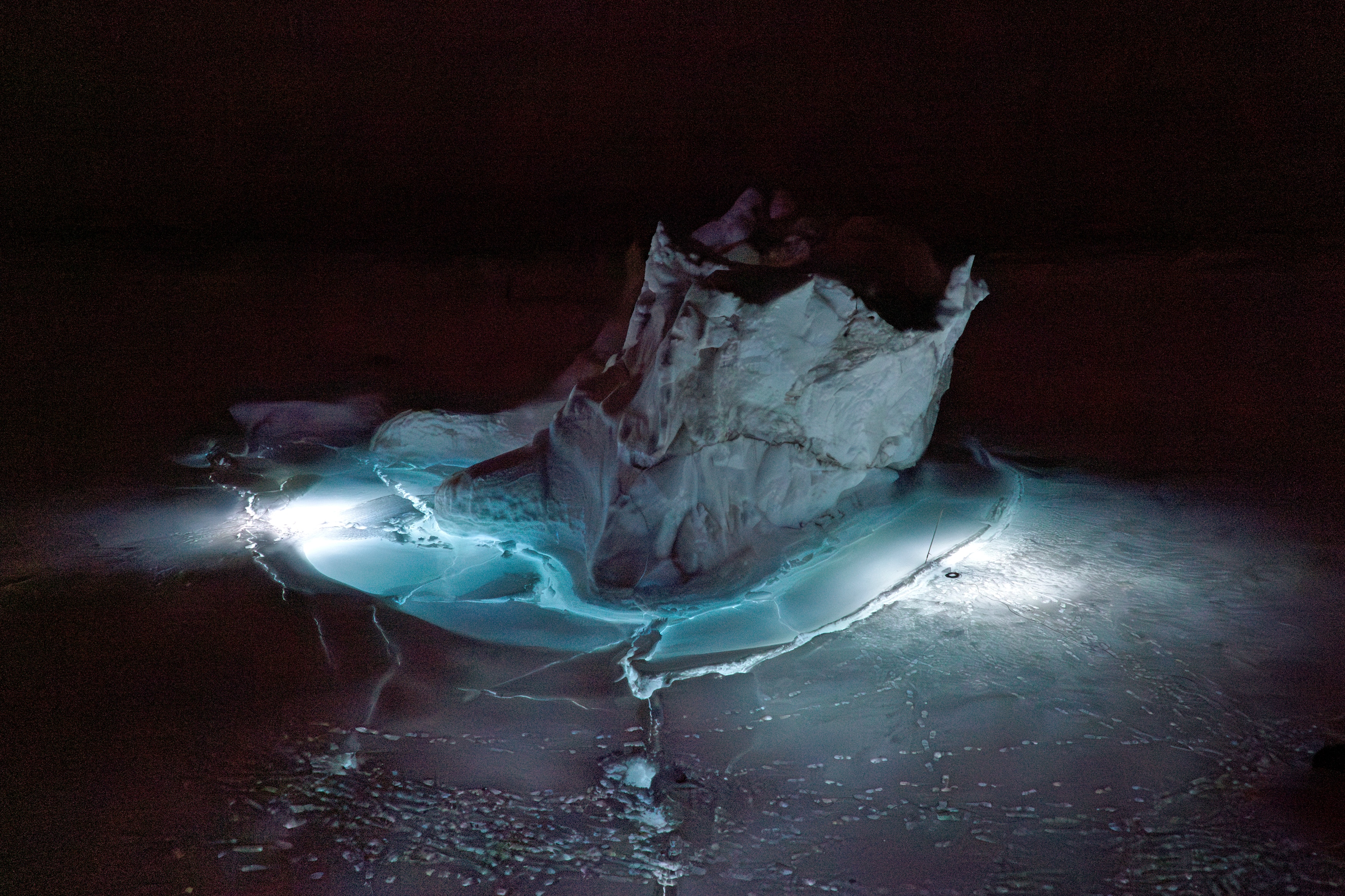
The term “albedo” refers to the fraction of sunlight that is reflected by a surface—a crucial phenomenon for climate research in the Arctic. Julian Charrière employs this notion both physically and metaphorically to reflect on the interactions between humans, nature, and scientific knowledge. The photo was taken during the production of “Albedo” near Qeqertarsuaq.
(photo: Antoine Drancey, copyright Julian Charrière)
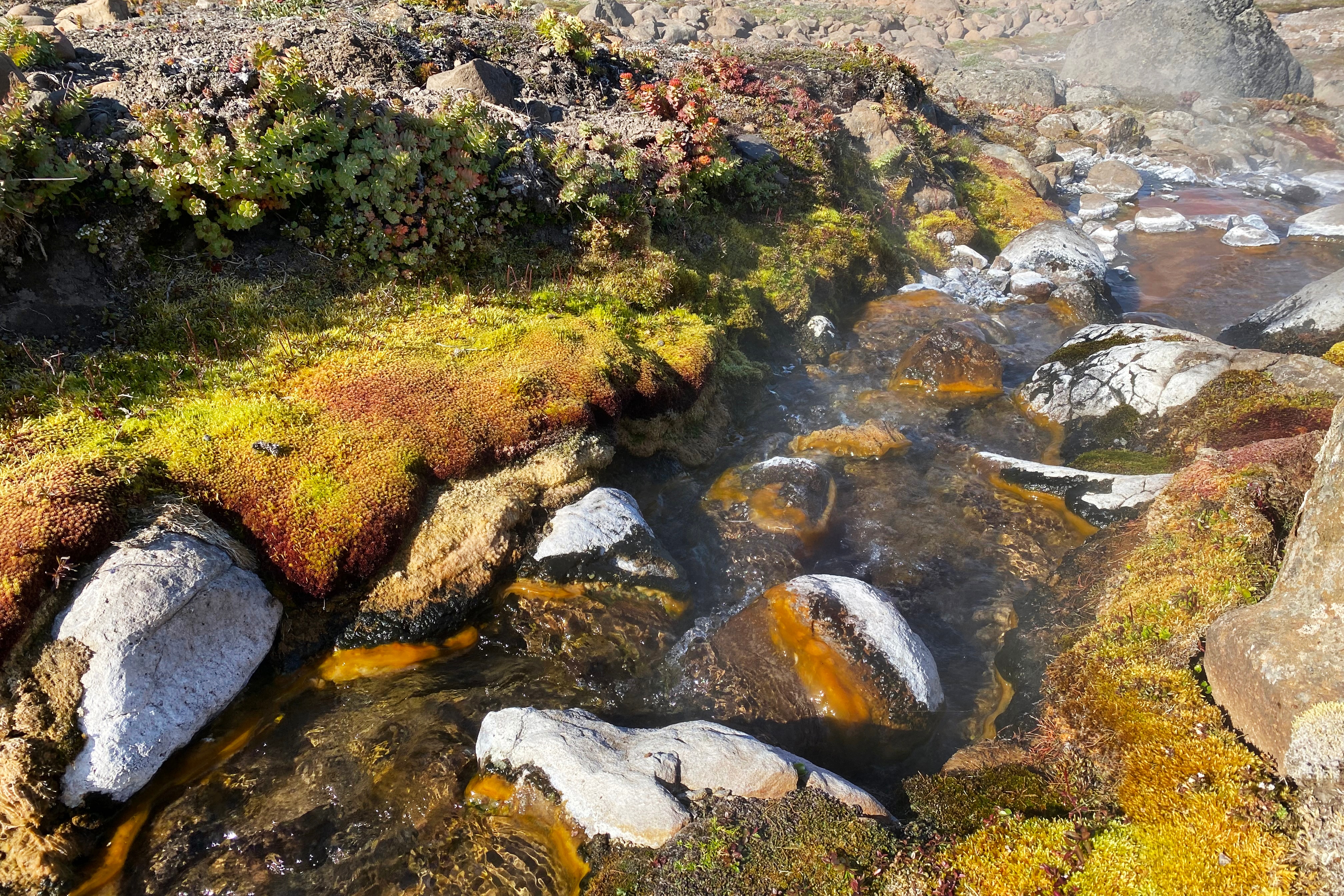
A hot spring at Knighton Bay emerges from a hill side and is surrounded by dense vegetation thriving in the mild microclimate created by the warm air and hot water running downhill towards the shoreline.
(photo: Laura Helene Rasmussen)
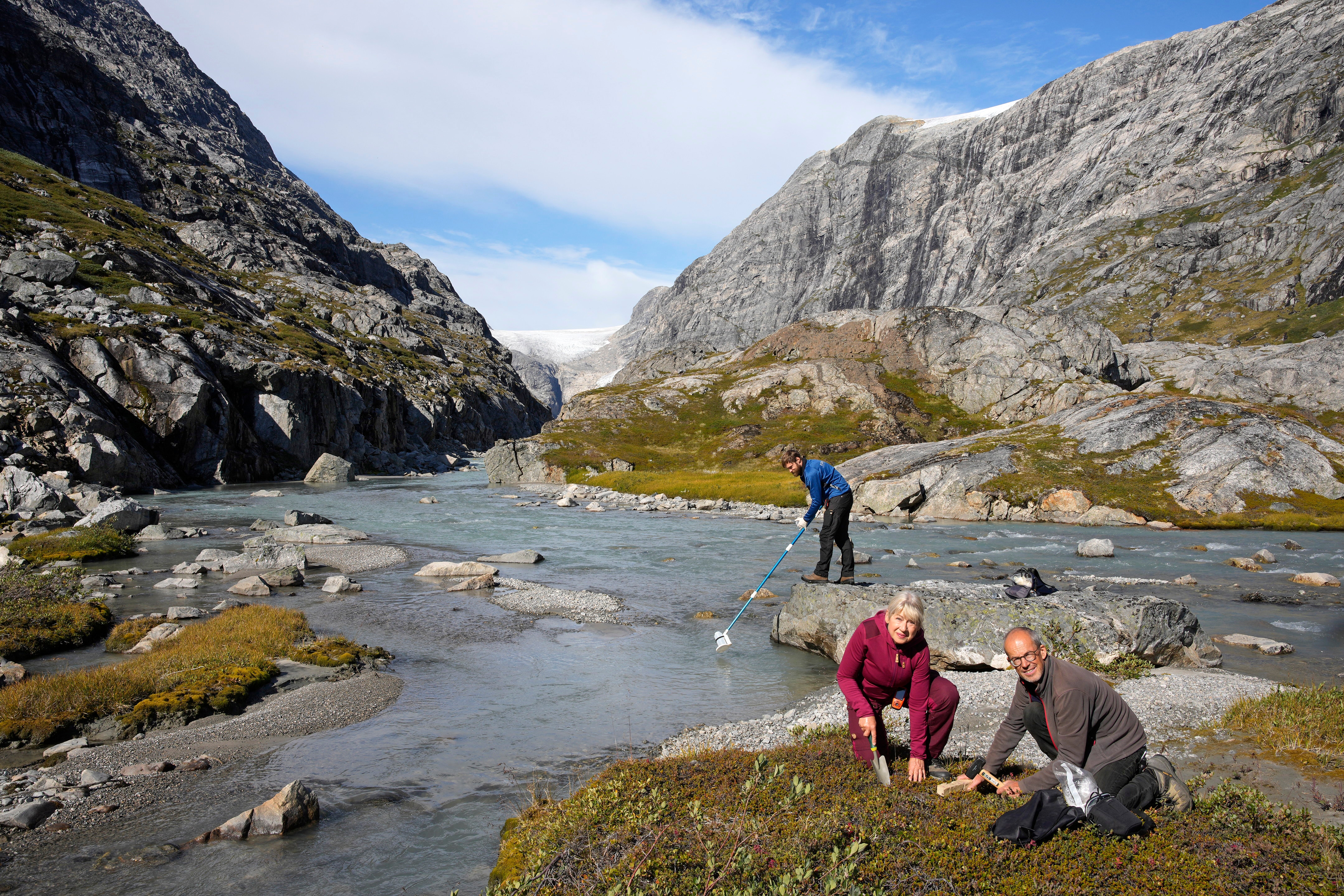
Christiane Leister and Anders Prieme sampling soil near a river at Prince Christian Sound. In the background, David Janssen is collecting water samples for his project. (photo: Julian Charriere)
